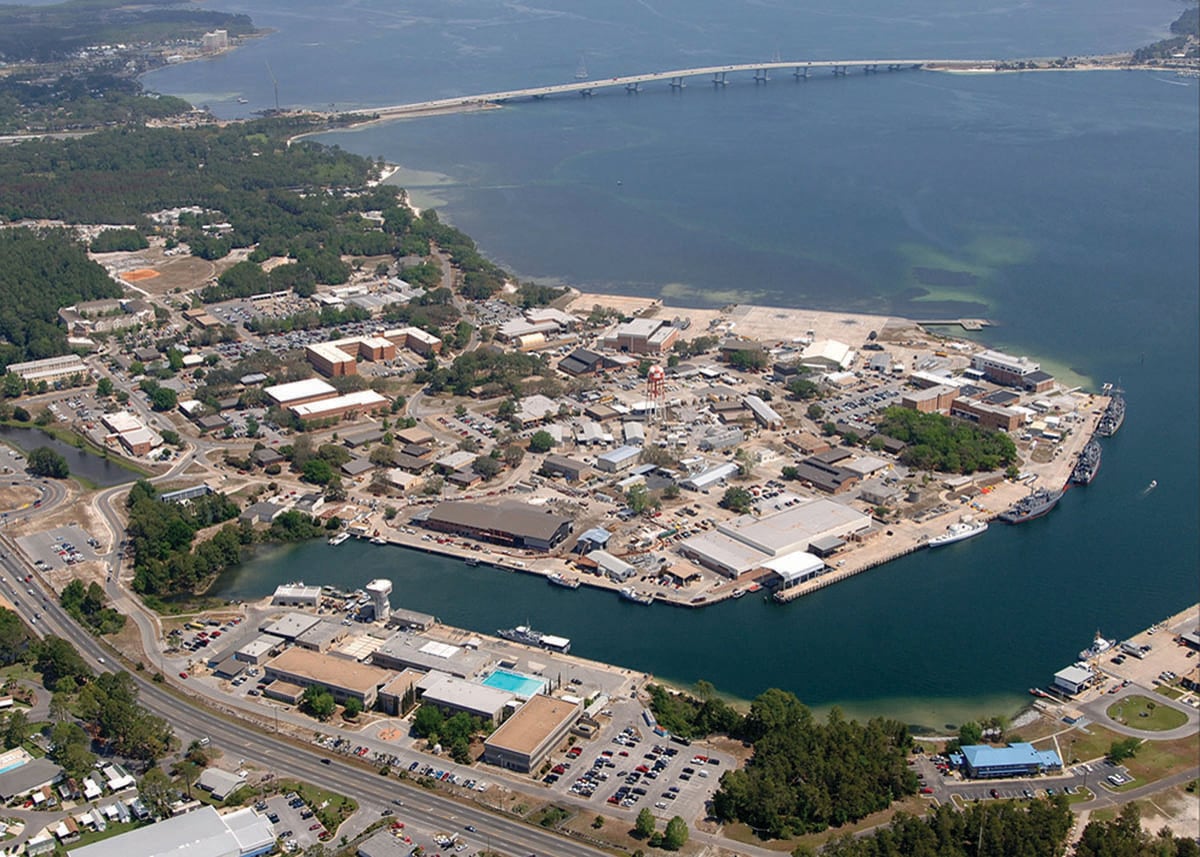On Nov. 1, Naval Support Activity Panama City issued an “all clear” order, signaling the base’s return to routine operations three weeks after Hurricane Michael ravaged Florida’s Gulf Coast.
But everyone there knows it’s going to take more time for several key tenant commands to become fully operational.
Only about 30 miles west from Florida’s Mexico Beach — where the Category 4 tropical cyclone made landfall on Oct. 10 packing 155-mile per hour winds — the base might be best known for housing Naval Surface Warfare Center Panama City Division.
That’s the Navy’s premier command for developing mine countermeasure, special warfare, amphibious and maneuver systems for coastal and littoral regions. But it’s also the home to the Navy Diving and Salvage Training Center and the Navy Experimental Diving Unit, both of which also sustained storm damage.

Luckily the Experimental Diving Unit avoided destruction and has returned to full operational capacity after three weeks of limited capabilities, according to Naval Sea Systems Command spokeswoman Colleen O’Rourke.
“All 140 military and civilian employees of the command were accounted for within 18 hours of the storm passing, and most of those employees have returned to work,” she said.
In Michael’s wake, the command organized working parties to make temporary repairs but more extensive fixes will be required in 2019.
Although Panama City’s Naval Surface Warfare Center “sustained moderate to severe damage to approximately 25 percent of its facilities,” O’Rourke said nearly all of its nearly 1,400 workers have returned to their jobs or continue to work remotely.

However, the hurricane didn’t spare the Navy Diving and Salvage Training Center, the largest diving facility in the world.
It annually trains more than 1,200 personnel from all the armed forces, including Navy divers who specialize in the deep sea, submarines, underwater construction, explosive ordnance disposal and medical care.
Army engineers; Marine combat divers and Air Force Pararescue Operators and Combat Controllers also take courses there.
Carla McCarthy, the Deputy Public Affairs Officer at the Pensacola-based Naval Education and Training Command, estimated that a full return to training won’t happen until January, at the earliest.
“Damage to infrastructure and equipment continues to be assessed,” she said “Available staff members have returned to work. Some NDSTC personnel are still working through the relocation process as a result of storm damage to their homes.”
McCarthy told Navy Times that "A" school students who were on base when the hurricane hit will continue to assist in the clean up and participate in physical condition to prep them for their arduous schooling.
In the meantime, she said staffers are "exploring and already implementing various training alternatives, such as rearranging training sequences, to continue to move initial accession students through the training pipeline.”
They’re also tweaking the advanced courses that were in progress or are slated to begin over the next two months.
“Some courses have been canceled and will be rescheduled when the school has resumed training, while others will graduate early where all testable course objectives have been satisfactorily met,” McCarthy said. “A small number of advanced students remain to assist with clean up and will begin training in January.”
Mark D. Faram is a former reporter for Navy Times. He was a senior writer covering personnel, cultural and historical issues. A nine-year active duty Navy veteran, Faram served from 1978 to 1987 as a Navy Diver and photographer.





